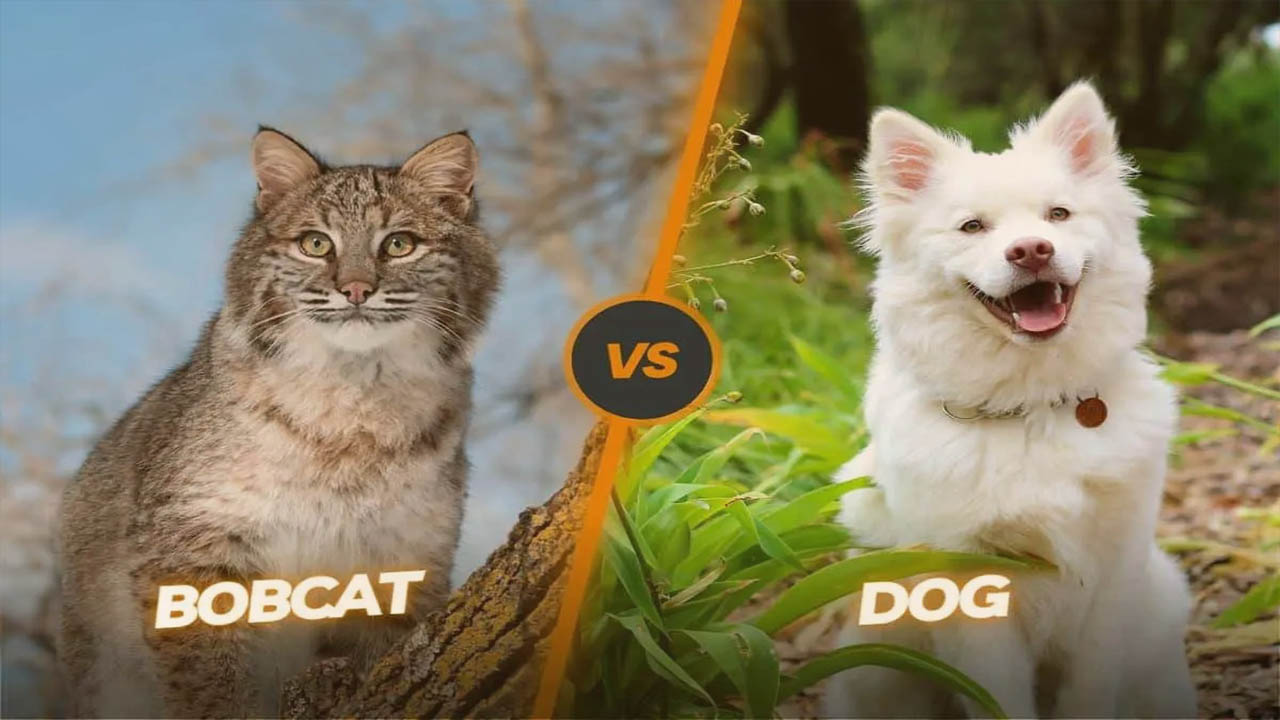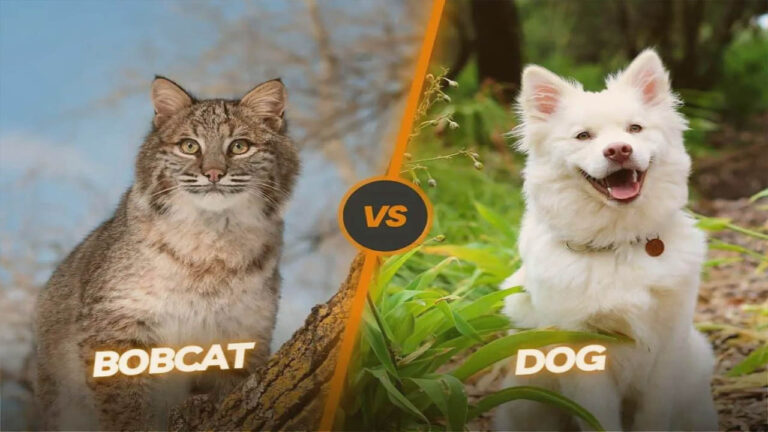Bobcats are typically larger than dogs. However, the size of a bobcat and a dog can vary depending on the breed and individual size. Bobcats are medium-sized wildcats that are typically found in North America. They are about twice the size of a domestic house cat and can weigh up to 40 pounds. On the other hand, Bobcat Vs Dog Size can vary depending on the breed, with some breeds such as the Great Dane weighing over 150 pounds, while others such as the chihuahua weigh only a few pounds.

Despite this size comparison, it’s important to note that bobcats and dogs are completely different animals with different temperaments, behaviors, and lifestyles. While bobcats are wild animals that hunt for their food, dogs are domesticated animals that rely on their owners for food and care.
Physical Characteristics Of Bobcats And Dogs
Bobcats and dogs are both impressive carnivores with unique physical characteristics. Bobcats are wild felines that are twice the size of domestic cats, with distinctive ears that are outlined in black. They also have short tails and are known for their agility and powerful legs.
Dogs, on the other hand, come in all shapes and sizes and are commonly kept as pets. They have furry coats, wet noses, four legs, and long tails. Comparing the size of bobcats and dogs, bobcats are larger and weigh between 13 to 30 pounds, while the average weight of dogs ranges from 3 to 100 pounds depending on the breed. Understanding the physical features of these animals is essential for anyone interested in the natural world.
Comparison Of Hunting Techniques
Bobcats and dogs are both skilled hunters, but their techniques differ significantly. Bobcats are solitary hunters, using stealth and camouflage to catch prey. They approach their prey quietly, waiting for the perfect moment to strike. Dogs, on the other hand, hunt in packs and use their keen sense of smell to track down their prey.
They work together and communicate through body language and vocalizations. Both bobcats and dogs are skilled predators in their own right, but their hunting techniques reflect their distinct personalities and social structures.
Adaptability To Different Environments
Bobcats and dogs are both highly adaptable creatures that can thrive in various environments. Bobcats, for example, can be found in deserts, forests, and even suburbs. Dogs, on the other hand, can be found in cities and rural areas alike.
Regardless of the environment, both animals have unique skills and traits that enable them to survive and thrive. For instance, bobcats are stealthy predators with sharp claws and powerful muscles, while dogs are social animals that work well in packs. The ability of these animals to adapt to different environments is truly remarkable and is a testament to their incredible survival instincts.
Interaction With Humans
Human interaction with bobcats and dogs can put people at risk, and the risks vary depending on the animal. Bobcats are generally shy and tend to avoid humans, but encounters can occur. Bobcats may attack if they feel threatened or if their territory is invaded, but attacks on humans are rare.
Dogs, on the other hand, are more likely to approach humans and can be unpredictable in their behavior. While most dogs are friendly, some can be aggressive and may bite, causing injury or infection. Overall, it is important to respect wildlife and approach interactions with caution, and always be aware of an animal’s behavior and body language. It is recommended to avoid approaching or feeding wild animals and to keep pets under control at all times to minimize the potential for harm to humans and animals alike.
Frequently Asked Questions For Bobcat Vs Dog Size
What Is The Size Difference Between A Bobcat And A Dog?
Bobcats are typically smaller than most dog breeds, weighing between 13 and 30 pounds while dogs range between 5 and over 100 pounds. However, some larger dog breeds can outweigh or be as heavy as a bobcat.
Can A Bobcat Kill A Dog?
In rare cases, bobcats may attack dogs, especially smaller breeds. However, most of the time, bobcats tend to avoid people, even dogs. It is important to supervise your pets and keep them on a leash in areas where bobcats may be present.
What Dogs Are At Risk Of Bobcat Attacks?
Small dog breeds such as chihuahuas, yorkies, and toy poodles are more vulnerable to bobcat attacks due to their size. It’s crucial to keep them indoors or in a fenced yard, especially at night when bobcats are most active.
What Should You Do If You Encounter A Bobcat With Your Dog?
If you encounter a bobcat while walking your dog, stay calm and slowly back away while keeping your dog close. Do not turn your back on the bobcat or run. Avoid making direct eye contact and make loud noises to scare it away.
How Can You Protect Your Dog From Bobcats?
To protect your dog from bobcats, keep them on a leash during walks, especially in areas where bobcats may be present. It’s also recommended to keep your dog indoors at night and to avoid leaving food outside, which can attract wildlife.
Conclusion
Both bobcats and dogs are impressive creatures, each with their unique physical attributes. While the bobcat is undoubtedly larger and more powerful than the average dog, this doesn’t always mean that it will win in a fight. Domestic dogs are usually trained and socialized and can use their intelligence to their advantage.
On the other hand, bobcats rely on their instincts and raw strength to survive. It’s essential to respect these animals and appreciate them from a distance as they both play vital roles in nature. Whether you’re a wildlife enthusiast or merely interested in animal comparisons, understanding the differences between bobcats and dogs is fascinating. We hope this article Bobcat Vs Dog Size has been informative and has helped you learn more about the incredible ways animals have adapted to their environments.



